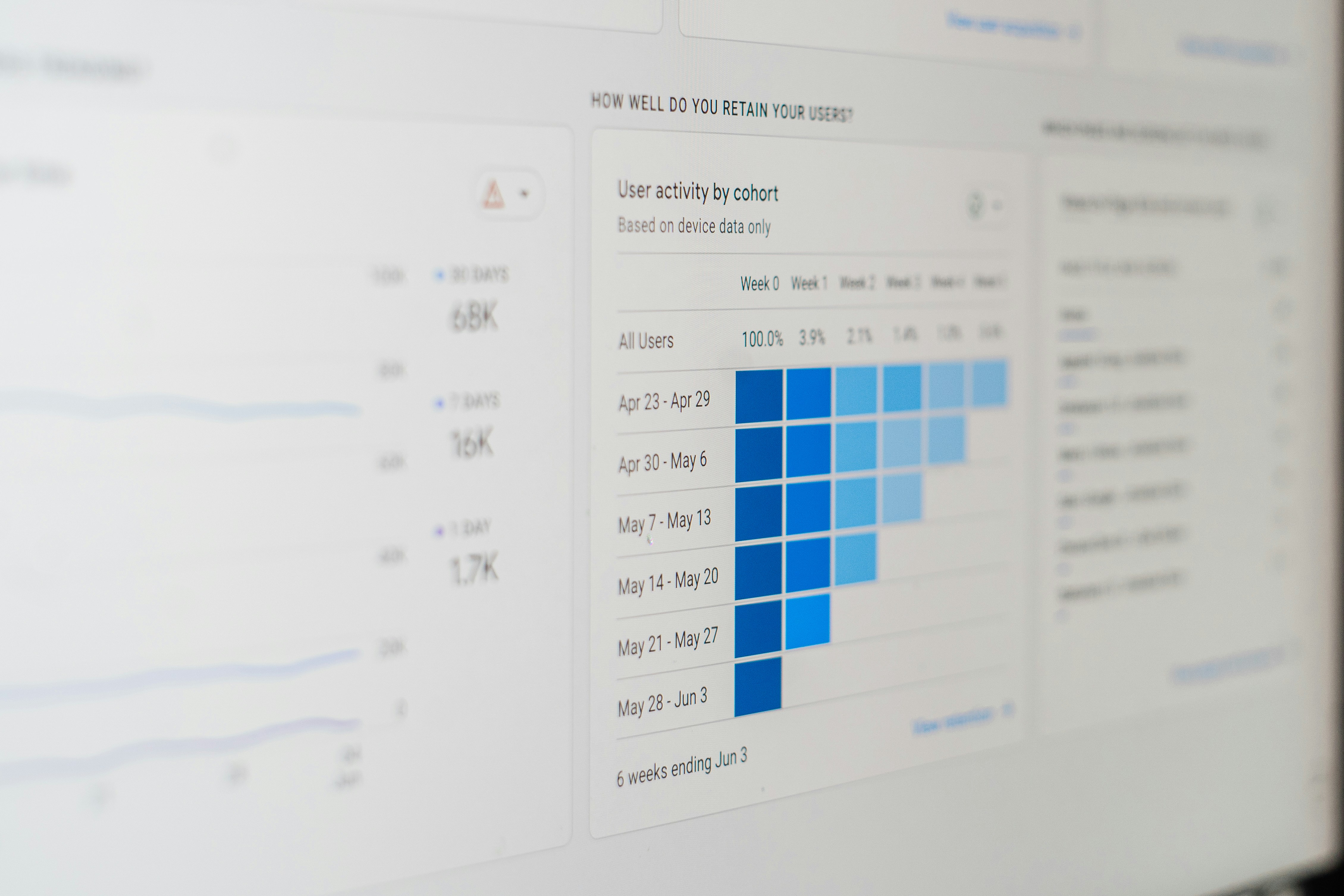
Introduction to AI Predictive Analytics
AI predictive analytics represents a powerful convergence of artificial intelligence (AI) techniques and advanced data analytics, enabling organizations to forecast future outcomes with remarkable accuracy. This innovative approach utilizes various technologies, including machine learning and big data analytics, to analyze extensive datasets and uncover patterns that might otherwise remain hidden. The essence of AI predictive analytics lies in its ability to learn from historical data, thereby facilitating better decision-making based on predictive insights.
At its core, this technology harnesses algorithms that can process vast amounts of data at a pace and scale beyond human capabilities. Machine learning algorithms, a subset of AI, are particularly significant in this context as they improve their performance as they are exposed to more data over time. Techniques such as regression analysis, clustering, and classification are frequently employed to extract valuable insights from structured and unstructured data alike.
Big data plays an essential role in the realm of AI predictive analytics. The ability to gather and analyze large volumes of information from diverse sources, such as social media, transactional records, and sensor data, allows businesses to create more precise models. These models can predict trends, customer behavior, and operational efficiencies, making AI predictive analytics instrumental across various sectors including finance, healthcare, marketing, and supply chain management.
The significance of these predictive capabilities cannot be overstated. Organizations that leverage AI predictive analytics can anticipate market shifts, enhance customer experiences, and optimize resource allocation. By integrating AI with predictive analytics, businesses can not only react promptly to changes in the environment but proactively shape their strategies for sustained success. Thus, understanding this intersection of technology is vital for any entity aiming to thrive in today’s data-driven landscape.
How AI Predictive Analytics Works
AI predictive analytics operates through a structured process that transforms historical data into actionable insights. The first crucial step involves data collection, where diverse datasets are gathered from multiple sources. This data can encompass anything from customer behaviors and sales trends to operational metrics. The quality and quantity of the data play a pivotal role; therefore, ensuring that the datasets are relevant, clean, and representative is fundamental for accurate predictions.
Following data collection, the next step is feature selection. This involves identifying the specific variables or features that will be instrumental in predicting outcomes. In this stage, data scientists employ techniques such as statistical analysis and domain knowledge to determine which features contribute the most significance to the predictive model. This phase is critical because irrelevant or redundant features can dilute the model’s effectiveness.
Once the features are selected, model training commences. During this phase, machine learning algorithms analyze the historical data to identify patterns and relationships. Various algorithms, such as regression models, decision trees, and neural networks, can be applied depending on the complexity and type of data. The model learns from these patterns, adjusting its parameters to enhance prediction accuracy.
After training, the model must be evaluated. This typically involves splitting the dataset into training and testing subsets, where the model’s performance is assessed against real-world scenarios. Common evaluation metrics include accuracy, precision, and recall. By understanding how well the model performs, data scientists can fine-tune it for better predictions. Additionally, ongoing monitoring and updates are essential as new data emerges, ensuring the predictive model remains relevant in dynamic environments.
Key Benefits of AI Predictive Analytics
Artificial Intelligence (AI) predictive analytics has emerged as a transformative tool across various sectors, making significant contributions to decision-making, operational efficiency, risk management, and customer experiences. One of the primary benefits of employing AI predictive analytics is its ability to enhance decision-making processes. By analyzing vast amounts of data and identifying patterns, organizations can make informed decisions that are data-driven rather than relying solely on gut instinct. This analytical support is crucial in various domains, including healthcare, finance, and marketing, where the stakes of decision-making can be high.
Another notable advantage of utilizing AI predictive analytics is the improvement in operational efficiency. By streamlining processes and minimizing costs, businesses can achieve higher productivity levels. For example, retailers can leverage predictive analytics to forecast inventory needs, ensuring that stock levels align with expected demand. This not only reduces excess inventory costs but also enhances customer satisfaction through improved product availability.
Furthermore, AI predictive analytics plays a vital role in reducing risks. By accurately identifying potential threats and vulnerabilities, organizations can proactively employ strategies to mitigate these risks. In the finance sector, for instance, predictive analytics can be used to detect fraudulent transactions before they occur, thus protecting both the institution and its clients. This proactive approach saves time and resources, allowing businesses to focus on growth and customer satisfaction.
Lastly, the ability to provide personalized experiences to customers is another essential benefit of AI predictive analytics. By analyzing customer behavior and preferences, companies can tailor their offerings to meet individual needs. For example, streaming services utilize predictive algorithms to recommend content based on users’ viewing histories, resulting in higher engagement and customer loyalty. Overall, the adoption of AI predictive analytics can significantly optimize operations, enhance decision-making, reduce risks, and create a personalized experience for customers across various industries.
Use Cases in Retail and E-commerce
AI predictive analytics has emerged as a transformative force within the retail and e-commerce sectors, offering various advantages that enhance operational efficiency and customer relationship management. One of the prominent applications is in inventory management, where businesses leverage predictive models to anticipate product demand. This capability ensures that inventory levels align closely with consumer trends, reducing costs associated with overstocking and stockouts. For instance, major retail chains like Walmart use predictive analytics to optimize their supply chain, allowing them to efficiently manage their inventories based on real-time data and shopping trends.
Dynamic pricing strategies represent another significant use case. Retailers increasingly utilize AI to analyze market conditions, consumer behavior, and competitor pricing to adjust their prices in real-time. This approach not only maximizes profit margins but also ensures that customers receive competitive pricing. Amazon, a leader in e-commerce, exemplifies this strategy by employing algorithms that adjust product prices numerous times a day, thus maintaining its competitive edge in the marketplace.
Sales forecasting is yet another area where AI predictive analytics has proven invaluable. Retailers can now make informed predictions about future sales trends by analyzing historical data and external factors such as seasonal fluctuations and economic indicators. This forecasting ability empowers businesses to make strategic decisions on product launches and marketing investments. Companies like Target leverage AI-driven sales forecasts to better prepare for peak shopping seasons, optimizing their resource allocation accordingly.
Finally, personalized marketing campaigns are revolutionizing customer engagement in e-commerce. By utilizing customer data and behavioral analytics, businesses can tailor marketing messages to individual preferences. Netflix, for example, utilizes predictive analytics to suggest content based on user behavior, enhancing user experience and increasing retention rates. Such strategies not only generate higher conversion rates but also foster long-term customer loyalty.
Use Cases in Healthcare
Artificial Intelligence (AI) predictive analytics is transforming the healthcare landscape by enabling organizations to make data-driven decisions that improve patient care and optimize operations. One of the most significant applications is in predicting patient outcomes. By analyzing vast amounts of patient data, AI algorithms can identify risk factors and predict conditions such as readmissions or complications, allowing clinicians to intervene proactively. This predictive power not only enhances patient safety but also reduces overall healthcare costs.
Another critical use case for AI predictive analytics is in disease outbreak forecasting. Public health agencies utilize these tools to analyze patterns in real-time data, including social media trends and historical health records, to predict potential outbreaks of illnesses such as influenza or COVID-19. This capability allows for timely resource allocation, ensuring that healthcare systems are equipped to handle surges in patient numbers and effectively curb the spread of infectious diseases.
The concept of personalized medicine is increasingly gaining traction with AI predictive analytics’ capabilities. By tailoring treatment plans based on individual patient profiles—taking into account genetic data, lifestyle factors, and previous health records—healthcare providers can implement more effective therapies. This not only maximizes the effectiveness of treatments but also minimizes adverse effects, enhancing overall patient outcomes.
Furthermore, AI predictive analytics plays a vital role in optimizing resource allocation within healthcare settings. Predictive models can forecast patient influx, allowing healthcare administrators to manage staffing levels, equipment availability, and facility needs more efficiently. For instance, hospitals can analyze historical admission rates to ensure that needed resources are available during peak periods, resulting in improved operational efficiency and enhanced patient satisfaction.
Use Cases in Finance and Banking
AI predictive analytics is revolutionizing the finance and banking sector by providing institutions with robust tools for data-driven decision-making. One of the primary applications of these analytical methods is fraud detection. Financial institutions utilize machine learning algorithms to analyze transaction patterns, allowing them to identify anomalies that might indicate fraudulent activities. By recognizing these patterns in real time, banks can mitigate risks and protect their customers more effectively.
Another significant use case is credit scoring. Traditional scoring methods often rely on limited historical data, which can lead to biased or inaccurate assessments of a borrower’s creditworthiness. However, with AI predictive analytics, lenders can incorporate a broader range of data sources, such as social and transactional data, thereby gaining a more comprehensive view of an applicant’s financial behavior. This enhances the accuracy of credit assessments and enables financial institutions to offer better loan conditions tailored to individual profiles.
Risk management also benefits greatly from these analytics techniques. Financial institutions can leverage AI to predict potential losses by analyzing historical data and current market trends. This predictive capability enables banks to maintain adequate capital reserves and make more informed investment decisions, ultimately minimizing exposure to market volatility.
Additionally, customer segmentation is enhanced through the use of AI predictive analytics. Financial organizations can analyze customer behavior and preferences, allowing them to tailor products and services to meet specific needs. By employing advanced analytics, banks can enhance customer satisfaction and loyalty, as services become more aligned with individual financial goals.
The integration of AI predictive analytics into the finance and banking sectors offers profound benefits, supporting institutions in enhancing security, improving risk management strategies, and fostering stronger customer relationships.
Challenges in Implementing AI Predictive Analytics
The adoption of AI predictive analytics brings a multitude of benefits; however, organizations often encounter several challenges during implementation. One key hurdle is data quality. Predictive analytics heavily relies on accurate, clean, and relevant data to render effective forecasts. If the input data is flawed, whether due to inaccuracies, missing entries, or inconsistencies, the outcomes will undoubtedly be affected. Organizations should establish robust data governance protocols to ensure data integrity and facilitate high-quality inputs into their AI systems.
Another significant challenge is the integration of AI systems with existing organizational processes and technologies. Many businesses utilize legacy systems that may not be compatible with modern AI infrastructure. This lack of interoperability can hinder the effective utilization of predictive analytics. To mitigate this issue, organizations can invest in middleware solutions that bridge the gap between old and new systems or consider a gradual migration strategy to modernize their IT frameworks.
Regulatory concerns also pose challenges, particularly in industries such as healthcare and finance, where data privacy regulations can impact the utilization of AI predictive analytics. Organizations must navigate a complex landscape of local, national, and international laws that govern data usage. It is essential to consult legal experts and ensure compliance with regulations such as GDPR or HIPAA throughout the predictive analytics implementation process.
Finally, there is the challenge of acquiring skilled personnel capable of developing, implementing, and maintaining AI systems. The demand for data scientists and AI specialists often exceeds supply, leading to a talent gap in many organizations. To address this, businesses can invest in training programs for existing employees, promote a culture of continuous learning, or collaborate with educational institutions to develop tailored curricula that cater to the evolving needs of the industry.
Future Trends in AI Predictive Analytics
The field of AI predictive analytics is poised for significant advancements as technology continues to evolve. One of the key trends expected in the coming years is the refinement of machine learning algorithms, which will improve the accuracy and efficiency of predictive models. As computational power increases, AI systems will be capable of processing larger datasets and detecting complex patterns that were previously unattainable. This not only enhances predictive capabilities but also broadens the range of applicable use cases across various industries, including healthcare, finance, and retail.
Moreover, the adoption of explainable AI is becoming increasingly critical in predictive analytics. As organizations rely more heavily on AI-driven insights, the need for transparency and accountability in decision-making processes has surged. Explainable AI aims to provide interpretations of the algorithms’ conclusions, enabling stakeholders to understand how predictions are generated. This advancement can enhance trust in AI systems, particularly in sectors where high-stakes decisions are made based on predictive models, thereby fostering more widespread acceptance and integration of these technologies.
Additionally, the rise of automated machine learning (AutoML) is set to revolutionize the development of predictive analytics models. AutoML tools enable users, regardless of their technical expertise, to easily create and deploy sophisticated predictive models. This democratization of data science not only accelerates the adoption of AI analytics but also enables smaller organizations to leverage predictive insights that were once the domain of well-funded enterprises.
Finally, as AI predictive analytics continues to mature, ethical considerations will become vital. Issues surrounding data privacy, algorithmic bias, and the moral implications of predictions must be addressed to ensure the responsible use of AI technologies. These evolving methodologies, combined with a focus on ethical practices, will shape the future landscape of AI predictive analytics, allowing it to benefit society while mitigating potential risks.
Conclusion
In the realm of modern decision-making, AI predictive analytics has emerged as a transformative tool that significantly enhances the capabilities of businesses across various industries. Throughout this blog post, we have explored the fundamental aspects of predictive analytics, including its definition, methodologies, and practical applications. The integration of artificial intelligence into predictive analytics allows organizations to analyze large volumes of data efficiently, identify trends, and make informed decisions based on reliable forecasts.
One of the key benefits of deploying AI predictive analytics is its ability to improve operational efficiency. By leveraging advanced algorithms and machine learning techniques, businesses can streamline their processes, reduce costs, and optimize resource allocation. In sectors such as healthcare, finance, and retail, the early identification of potential risks or opportunities can lead to substantial competitive advantages. This capability allows organizations to respond proactively to changing market dynamics and customer preferences.
Moreover, the use of predictive analytics empowers companies to enhance customer experiences by tailoring products and services to meet specific needs. Through deep insights into consumer behavior, businesses can anticipate demand fluctuations, personalize marketing strategies, and ultimately foster customer loyalty. The scalability of AI-driven predictive analytics also ensures that organizations of all sizes can harness its benefits, paving the way for data-driven culture that fosters innovation and growth.
As we have seen, the applications of AI predictive analytics are diverse and impactful, ranging from optimizing supply chains to enhancing patient care in healthcare systems. As such, it is imperative for businesses to embrace these technologies and explore the extensive potential they offer. By doing so, organizations can unlock new opportunities, make strategic decisions that align with future trends, and secure their position in an increasingly data-driven world.



